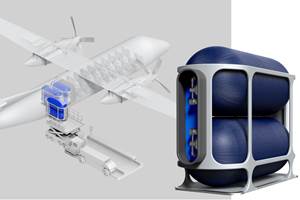Composites industry is growing up—but hurdles still remain
It’s the era of when, not if, for the use of composite materials.
It’s Jan. 19 as I write this, and tomorrow, in the United States, a new president will take the oath of office. What, exactly, the Trump Administration will look like, and how it will behave, remains to be seen. What’s certain is that change is afoot, and by the time you read this, perhaps there will be some clarity about the nature of that change. There was much discussion during and after the General Election campaign about policies the new administration might pursue: Tax reform, healthcare reform, regulation reform, new trade agreements, immigration reform, etc. There also has been talk about increased government investment, designed to stimulate economic activity. At the top of this much-examined list has been infrastructure — the roads, bridges and tunnels on which we all rely, mainly for transportation.
This is exciting for the composites industry because composites are ideal for concrete rehabilitation. It’s also daunting because the folks who do infrastructure maintenance and repair are highly dependent on legacy materials, and they are not fully convinced of the benefits that composites can provide. Composites haven’t “earned” their way into the infrastructure brotherhood of materials yet.
If you’ve been in the industry for even a short time, you likely have heard the “earned” terminology before. It’s been used in end-markets whenever composites have tried to break through, vying against whatever the legacy materials of choice were at the time: Wood, aluminum, steel, titanium, concrete, etc.
If you haven’t noticed, however, we’re running out of end-markets in which composites have not yet earned a seat at the table. The marine end-market, of course, was conquered by composites long, long ago. They are used so pervasively there now, that composites have become the rule to which every other material is the exception. The same goes for wind energy, where composites were and still are the enabler that made the fabrication of the blades that turn the turbines practical.
In aerospace, since the advent of the Boeing 787 and Airbus A350 XWB, the question commercial aircraft OEMs face is not if composites should be used, but only where and how much. Even the production automotive body-in-white, so tantalizingly out of reach for so long, seems finally to be the target of a gradual composites adoption effort that promises to usher in new ways of designing and making composite structures.
Similarly, there is an effort across many end-markets — automotive, aerospace, architecture, to name a few — to integrate composites into multi-material solutions that marry carbon and glass fiber-reinforced composites with metals to affordably meet a host of weight and strength goals. Such applications prove that composites are becoming a material staple, and less an exotic and unusual outlier.
Finally, we must look at what’s happening in the investment community. In the past 18 months alone we have seen substantial mergers and acquisitions activity, with large, established firms, as well as private equity firms, investing heavily in composites industry stalwarts: Teijin buying Continental Structural Plastics, Solvay Specialty Polymers buying Cytec, GKN buying Fokker Aerostructures, Hexcel acquiring Formax, Tennessee Acquisition BV buying Royal TenCate, Meggitt buying Cobham, Precision Castparts acquiring Composites Horizons. And there are more to come.
What does all of this mean? In short, the composites industry is growing up. This is isn’t to say that there aren’t hurdles yet to clear. As the infrastructure market proves, acceptance of composites is not universal. Challenges remain in the areas of materials, design engineering, automation and processing speed.
Still, the composites industry has clearly established a firm footing in the global manufacturing supply chain, and it’s seen not only as interesting and viable, but also as prospering and profitable, and thus has become a high-value target in the wider business community. Composites have clearly earned their way into the manufacturing world.
Related Content
Carbon fiber in pressure vessels for hydrogen
The emerging H2 economy drives tank development for aircraft, ships and gas transport.
Read MoreRecycling end-of-life composite parts: New methods, markets
From infrastructure solutions to consumer products, Polish recycler Anmet and Netherlands-based researchers are developing new methods for repurposing wind turbine blades and other composite parts.
Read MoreNovel composite technology replaces welded joints in tubular structures
The Tree Composites TC-joint replaces traditional welding in jacket foundations for offshore wind turbine generator applications, advancing the world’s quest for fast, sustainable energy deployment.
Read MoreJEC World 2022, Part 3: Emphasizing emerging markets, thermoplastics and carbon fiber
CW editor-in-chief Jeff Sloan identifies companies exhibiting at JEC World 2022 that are advancing both materials and technologies for the growing AAM, hydrogen, automotive and sustainability markets.
Read MoreRead Next
From the CW Archives: The tale of the thermoplastic cryotank
In 2006, guest columnist Bob Hartunian related the story of his efforts two decades prior, while at McDonnell Douglas, to develop a thermoplastic composite crytank for hydrogen storage. He learned a lot of lessons.
Read MoreComposites end markets: Energy (2024)
Composites are used widely in oil/gas, wind and other renewable energy applications. Despite market challenges, growth potential and innovation for composites continue.
Read MoreCW’s 2024 Top Shops survey offers new approach to benchmarking
Respondents that complete the survey by April 30, 2024, have the chance to be recognized as an honoree.
Read More














.jpg;maxWidth=300;quality=90)








